

"Purchase 20mg pravachol with visa, cholesterol levels effects body".
M. Taklar, M.A., M.D., M.P.H.
Medical Instructor, University of Illinois College of Medicine
In addition cholesterol in liquid eggs order pravachol 10mg, completers cholesterol medication rhabdomyolysis 10mg pravachol for sale, older participants cholesterol levels 40 year old male trusted 20 mg pravachol, and Caucasians were more adherent to the intervention cholesterol levels good range buy pravachol 10 mg online. All participants wore an Actigraph 7164 accelerometer at baseline, 3-, and 6-months. The present study determined whether improvements in physical function were present 18 months after completion of the program. Analyses of variance were conducted to examine differences in physical function between the two conditions 18 months post-intervention. However, no studies have examined whether sedentary behavior can be altered among the oldest old. We examined the effects of a sedentary behavior module provided within a physical activity intervention in retirement communities. Methods: Participants (N = 11 sites; mean age = 84; 72% female) were randomized to receive an attention control (N = 156) or a multilevel physical activity intervention (N = 151; monthly group sessions, phone coaching, built environment changes) over 12 months. Between the 3- and 6-month assessments, participants were given education and feedback on their sedentary time and goals were set for reducing sedentary behavior. Generalized linear mixed models were conducted to examine between group changes in sedentary time over time while adjusting for age, sex, site, marital status, and accelerometer wear time. Conclusions: Changes in sedentary time were minimal in the intervention group, however there was an increase in sedentary time among the control group over the year. The physical activity intervention reduced sedentary time more than the module focusing on decreasing sedentary behavior. Greater intervention efforts are likely needed to lead to bigger decreases in sedentary behavior among older adults. Using quantitative content analysis, this study describes the recent literature on parenting and childhood obesity, and examines the representation of vulnerable populations, including racial/ethnic minority and low-income families. Eligibility criteria included non-intervention studies that focused on parenting and childhood obesity, were written in English, published between January 2009 -July 2014, and that included parents/caregivers as research participants. Globally, few articles targeted parents from ethnic/racial minority (14%), indigenous (2%), or immigrant (6%) groups and less than one in five (19%) articles targeted parents from low-income backgrounds. Conclusions: While racial/ethnic minority and lowincome families disproportionately experience the burden of obesity, only a minority of all articles targeted caregivers from these vulnerable groups. Expansion of study designs is recommended to ensure that parents from vulnerable population groups are represented in future research. The explicit recruitment of more diverse caregivers will improve the validity and generalizability of findings, and more effectively inform development of culturally relevant childhood obesity interventions and policies. Individuals in both groups met individually with researchers four times over the course of four weeks. The control group (n= 11) received information regarding their physical activity habits twice over the course of four weeks. However, it is unclear when during childhood obesity risk is initiated and whether this risk can be altered by interventions in adulthood. We evaluated sensitive period models of the association between early life disadvantage (at birth vs. We analyzed data from 931 participants in the New England Family Study who were followed from birth through middle adulthood (mean age, 44. Socioeconomic disadvantage was a composite measure based on parental education, income, occupation, family structure, and household crowding. Socioeconomic disadvantage at birth was also associated with risks for adult adiposity (fruit and vegetable consumption, cigarette smoking, and depressive symptoms). In mediation analyses, there was evidence for an indirect effect linking early life disadvantage to adult adiposity through elevated depressive symptoms. In conclusion, the excess risk of obesity among lower socioeconomic status groups may originate at the very beginning of life. This risk may be due in part to adult depression, which could be an intervention target to mitigate the adverse effects of early life disadvantage.
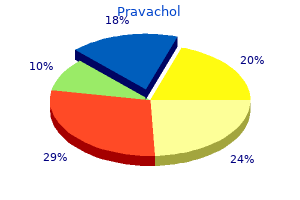
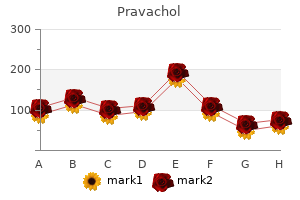
Liver failure Also in liver failure cholesterol medication names uk discount pravachol 20mg line, hyponatraemia is associated with poorer survival (57) good cholesterol chart levels discount 10mg pravachol visa. Whether this reflects disease severity or has a direct contributory effect remains unclear (58) cholesterol medication lipitor side effects pravachol 20 mg cheap. Systemic vasodilation and arteriovenous shunting of blood may reduce the effective arterial blood volume can cholesterol levels change quickly buy 10 mg pravachol visa. As in heart failure, this reduction can lead to neurohumoral activation and water retention due to baroreceptormediated vasopressin release. In addition, mineralocorticoid receptor blockers such as spironolactone, which either alone or in combination with loop diuretics, are frequently used to reduce sodium retention in liver failure, can contribute to hyponatraemia (59). Nephrotic syndrome In nephrotic syndrome, blood volume may be decreased due to the lower serum oncotic pressure (under-fill hypothesis). If this happens, stimulation of vasopressin secretion can cause patients to develop hyponatraemia. The tendency for water retention is generally balanced by intense sodium retention, but the increased renal re-absorption of sodium usually necessitates a considerable dose of diuretics. The combination of increased vasopressin release and diuretic use may promote moderate hyponatraemia, especially in children with low blood pressure (60). Definition of hyponatraemia based on biochemical severity European Journal of Endocrinology 6. If hyponatraemia cannot be classified, we consider it being chronic, unless there is clinical or anamnestic evidence of the contrary (Table 8). For this guideline, we wanted the classification to be consistent and clear so that all users would have a correct understanding of the terminology used. We also wanted to make the classification directly relevant for patient management. However, treatment strategies cannot be adequately classified with reference to a single criterion. Hence, treatment strategies have been classified according to combinations of these criteria. The definitions of mild, moderate and profound hyponatraemia in published research are variable, especially the threshold used to define profound hyponatraemia for which values have ranged from 110 to 125 mmol/l (64, 65). Several studies report that when serum sodium concentrations drop below 125 mmol/l, symptoms become more common (61, 66, 67, 68, 69, 70, 71), and the correction to normonatraemia necessitates careful monitoring to avoid overly rapid correction (72). Experimental studies also suggest that the brain needs w48 h to adapt to a hypotonic environment, achieved mainly by extruding sodium, potassium, chloride and organic osmoles from its cells (77, 78, 79). Before adaptation, there is a risk of brain oedema because the lower extracellular osmolality promotes a shift of water into the cells. However, once adaptation is completed, brain cells can again sustain damage if the serum sodium concentration increases too rapidly. Breakdown of the myelin sheath insulating individual neurons can result in what is called the osmotic demyelination syndrome (80, 81, 82, 83). Consequently, it is important to distinguish between acute and chronic hyponatraemia to assess whether someone is at a greater risk of immediate brain oedema than of osmotic demyelination (84). Unfortunately, in clinical practice, the distinction between acute and chronic hyponatraemia is often unclear, particularly for patients presenting to the emergency room. If classifying hyponatraemia as acute or chronic is not possible, we have decided to consider hyponatraemia as being chronic, unless there are reasons to assume it is acute (Table 9). Chronic hyponatraemia is much more common than acute hyponatraemia and should be managed accordingly to avoid osmotic demyelination (85, 86). The distinction is based on selected observations in acute hyponatraemia; those who subsequently die more often experience what we define as severe symptoms than those who live (73, 74). Moderately severe symptoms caused by brain oedema are less frequently associated with death. Nevertheless, they may rapidly progress to more severe symptoms associated with an adverse outcome.
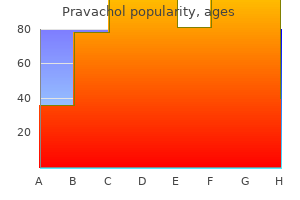
Households often use their capabilities cholesterol test when not fasting cheap 10mg pravachol free shipping, skills cholesterol test birmingham order pravachol 20 mg with amex, and know -how to diversify income sources and offset risks is there cholesterol in eggs bad for you buy discount pravachol 20 mg on line. It can be said livelihood is secured cholesterol quail egg buy discount pravachol 20 mg on-line, when households have secure ownership of, or access to , resources and income-earning opportunities. This includes reserves and assets to: offset risks, ease shocks, and meet contingencies. The common factors or situations (risks or shocks) that lead to livelihood insecurity includes: Drought and Floods, Conflict, Disease outbreaks & illness, Population growth, Economic adjustment policies, Natural resource degradation, etc. This means Health is a basic commodity of livelihood; it is an important means as well as prerequisite for achieving livelihood security. The three key linked and interrelated issues that justify such mechanism, are: first, the 83 important relation of health with access to income and other resources which are core to livelihood; second, any risk or shock of any cause are manifested in terms of health problems; and finally, health and health related problems (disease outbreaks & illness, population growth, etc) are among the key factors (risks or shocks) that lead to livelihood insecurity. All these three mechanisms affect the livelihood security via affecting level of productivity; income, savings and expenditures (key determinateness of access); utilization and distribution of resources. A healthy population may also require less health care, which implies lower health expenditures for both the individual and the public sector. Poor health on the other hand, make people unable to work full-time and thus their income level is reduced which will affect their livelihood and they will not be able to get their basic needs including health services. Health and health related problems affect household access to income, economic growth, and resource distribution resulting in challenged household livelihood security and resilience. Ill health not only affects the means (financial resources, asset, income, know-how, time, etc, ) to livelihood, but also modifies or complicates the context such as the economic, cultural, political and social situations in which individuals` making effort to achieve their livelihood basic needs. Thus, in order to have better livelihood, families should be economically secured. Economic security is achieved when individuals or household have the capacity to generate sufficient income to satisfy the basic needs of the family, and to maintain or increase the goods necessary for the stability of the family economy, as well as to protect it against shocks. As a prerequisite for this, households should have health security and should be nutritionally secured. Developing a global partnership for development In addition, 18 quantitative targets for each goal with 48 indicators for monitoring there have been set and agreed upon. The particular goals and targets that are relevant for health sector are shown below. Goal 4: Reduce Child Mortality Target 5: Reduce the under five mortality rate by two-thirds, between 1990 and 2015 Goal 5: Improve Maternal Health Target 6: Reduce the maternal Mortality ratio by three quarters, between 1990 and 2015. Understand basic factors that influence health service coverage and distribution in the Ethiopian context, Discuss the existing health service coverage and distribution of Ethiopia. Over four centuries, modern health care was brought to Ethiopia from many different countries by other European travelers, missionaries and members of diplomatic missions. Later on different emperors have facilitated the introduction and development of the health service. The foundation of r formalized health services goes back to 1908, when an office dealing with health was created in the Ministry of Interior. The Ethiopian Government, in 1952, began to develop a basic health service in which health centers have been considered the backbone of the service. This time, most of the rural health service providers were foreigners and many of them were missionaries. The purpose of this College was to train three categories at health workers namely Health officers, Sanitarians and Community Nurses. These health workers were meant to staff the rural health centers and the college had produced over 1000 such professionals until 1987. There was no National Policy and Strategy for the development of the Health Service until 1963, when the Second Five-year Development Plan was launched. The second five-year development plan, which was from 1963 1967, contained major policies and strategies regarding the health sector. This plan emphasized, among other things, on preventive aspects of health services by adopting the eventual goal of establishing at 91 least one health center for every 50, 000 people and one health station (Clinic) for every 5000 people. The consecutive plans which were the third five-year (1968 1973) and the fourth five-year (1974 1979) gave much detailed emphasis on the expansion of basic health services, the importance of public health services and were aiming at raising the health service coverage. Based on useful experiences of annual plans, from 1978-1984, a Ten Year Health Sector Plan 1985-1994 was prepared by the government. In order to achieve these targets, the plan emphasized on community participation, Intersectoral collaboration, integration of vertical programs and specialized health institutions, delivery of essential health service at affordable cost, and the development of a six-tier health system.
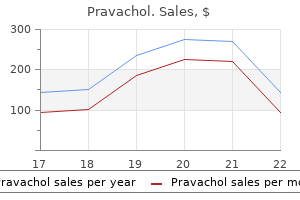
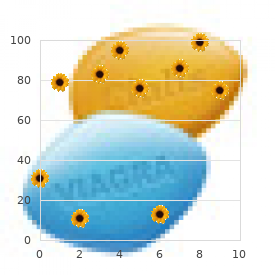
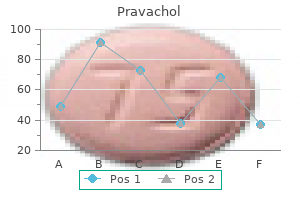
Appleyard foods that decrease cholesterol buy 10 mg pravachol with visa, M hdl cholesterol ratio and risk generic 10 mg pravachol visa, et al: A randomized trial comparing wireless capsule endoscopy with push enteroscopy for the detection of small-bowel lesions cholesterol melting point order 10mg pravachol overnight delivery. Banez cholesterol test results chart purchase 10 mg pravachol mastercard, E, et al: Laboratory monitoring of heparin therapy-the effect of different salts of heparin on the activated partial thromboplastin time. Constantinescu, M, and Hilman, B: the sweat test for quantitation of electrolytes. Corbett, J: Laboratory Tests and Diagnostic Procedures with Nursing Diagnosis, ed 7. Davidsohn, I, and Henry, J (eds): Todd-Sanford: Clinical Diagnosis by Laboratory Methods, ed 15. Department of Health and Human Services, Office of Disease Prevention and Health Promotion: Healthy People 2000. Homocysteine vs cholesterol: Competing views or a unifying explanation of arteriosclerotic cardiovascular disease. International Medicine Clinic Research Consortium: Effect of Digital Rectal Examination on Serum Prostate Antigen in a Primary Care Setting 155:4, 1995. Kaplan, L, and Sawin, C: Laboratory Support for the Diagnosis and Monitoring of Thyroid Disease. A Comparison of Pseudocysts, Serous Cystadenomas, Mucinous Cystic Neoplasms, and Mucinous Cystadenocarcinoma. Lewis, B, and Swain, P: Capsule endoscopy in the evaluation of patients with suspected small intestinal bleeding, a blinded analysis: the results of the first clinical trial. Lewis, S, et al: Medical Surgical Nursing Assessment and Management of Clinical Problems, ed 6. National Institute of Neurological Disorders and Stroke: Myasthenia Gravis Fact Sheet. Pagana, K, and Pagana, T: Diagnostic Testing and Nursing Implications: A Case Study Approach, ed 5. Perrier, Arnaud, et al: D-dimer testing in suspected venous thromboembolism- An update. Peter, J, and Reyes, H: Use and Interpretation of Tests in Allergy and Immunology. Peterson, P, and Cornacchia, M: Anemia: Pathophysiology, clinical features, and laboratory evaluation. Petrillo, M, and Sanger, S: Emotionalized Care of Hospitalized Children: An Environmental Approach, ed 2. Remaley, A, et al: Point of care testing of parathyroid hormone during the surgical treatment of hyperparathyroidism. Savage, G, Charrier, M, and Vanhannen L: Bioavailability of soluble oxalate from tea and the effect of consuming milk with the tea. Seeram, E: Computed Tomography: Physical Principles, Clinical Application, and Quality Control, ed 2. Society of Nuclear Medicine: Procedure Guidelines for C-14 Urea Breath Test, 2001. Spruill, W, Wade, W, Cobb, H: Estimating Glomerular Flitration Rate with a Modification of Diet in Renal Disease Equation: Implications for Pharmacy. Stein, H, Slatt, B, and Stein, R: the Ophthalmic Assistant: A Guide for Ophthalmic Personnel, ed 6. Strasinger, S, and Di Lorenzo, M: Phlebotomy Workbook for the Multiskilled Healthcare Professional. Transcutaneous Bilirubin Measurement is as Effective as Laboratory Serum Bilirubin Measurements at Detecting Hyperbilirubinemia. Tressler, K: Clinical Laboratory and Diagnostic Tests: Significance and Nursing Implications, ed 3. Uzunlar, H, Eroglu, A, and Bostan, H: Thoracic Epidural Anesthesia Combined with Remifentanil-Propafol Without Muscle Relaxants in a Myasthenic Gravis Patient for Abdominal Surgery. Van Leeuwen, A, and Perry, E: Basic Principles of Chemistry: Techniques Using Alternate Measurements. Wasserman, M, et al: Utility of fever, white blood cells, and differential count in predicting bacterial infections in the elderly.